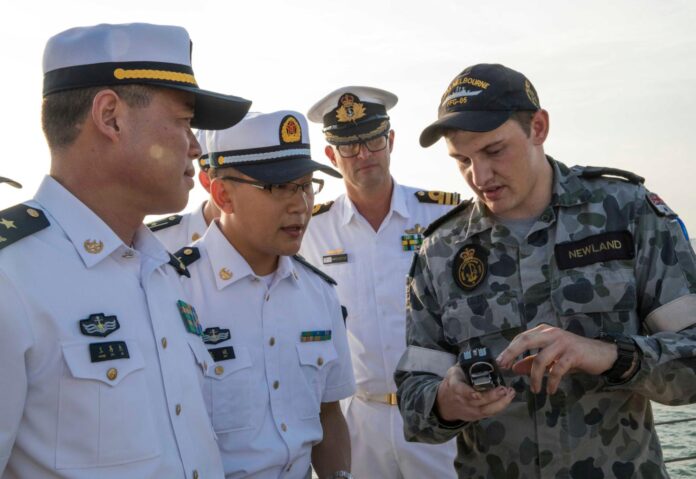
By James Laurenceson and Xi Chen*
Chinese ship visits to Australia don’t always generate alarm and controversy. Last month, Hobart hosted the arrival of Chinese ice-breaker Xue Long 2, more than five years after its previous visit. Xue Long 1 visited last March.
Tasmanian Premier Jeremy Rockliff said last November that an upcoming visit to China had “the clear purpose to invite Xue Long 1 and 2 vessels to reengage and utilise the Port of Hobart as part of their Antarctic Program”.
Visits by Chinese scientific research vessels are also a reminder that the benefits of such visits might also prove worthwhile in the security arena.
In contrast to the Premier’s enthusiasm, last month Prime Minister Anthony Albanese told journalists he would “prefer” another Chinese research vessel, this one owned by the Chinese Academy of Sciences, was not navigating along Australia’s southern coastline.
This was just weeks after a Chinese naval task force, which included a cruiser and frigate, circumnavigated Australia. Retired Navy Admiral and former Chief of the Australian Defence Force (ADF), Chris Barrie, was a conspicuous public voice in lamenting that the task force “didn’t come and give us the honour of a port visit so we could … further try to strengthen our relationships”.
It is difficult to imagine that today’s domestic politics would allow Canberra to contemplate approving a Chinese naval task group visit to an Australian port like the one that Sydney Harbour hosted in 2019. With China’s activities in Antarctica having become more contested in Australia’s public debate, it cannot be discounted that even a future visit by a Chinese ice-breaker might be contentious.
In February 2022, after political relations between Canberra and Beijing had hit rock bottom, then prime minister Scott Morrison declared that while “Australia works in partnership with so many other nations who share our objectives”, China had “different objectives”, particularly around environmental stewardship.
National security commentators have warned that under the guise of “scientific research” allowed by the Antarctic Treaty, China has been deploying equipment and technologies with intelligence collection and military applications. It has even been suggested that China sees its activities in Antarctica as the basis upon which it could make a future territorial grab.
To date, Australian officials and scientists have tended to look sceptically on such allegations, particularly in the absence of any compelling evidence that China has breached the Treaty’s non-militarisation provisions.
Nonetheless, scholars have urged China to provide greater detail and clarity around its strategic interests in Antarctica. There was widespread disappointment last October when China joined Russia in blocking the establishment of new marine protected areas and the renewal of krill catch limits.
James Laurenceson is Director and Professor at the Australia-China Relations Institute (UTS), University of Technology Sydney and Xi Chen is a Research fellow, Australian Studies Centre, East China Normal University, and a Visiting Scholar at the Australia-China Relations Institute at the University of Technology Sydney (UTS:ACRI).
An RAN sailor shows his PLA Navy counterparts damage control equipment during a tour around HMAS Melbourne during the ship’s 2018 port visit to Zhanjiang, China (Defence Imagery)



